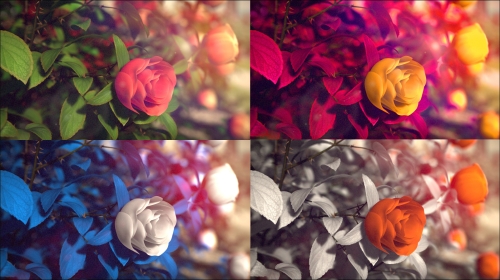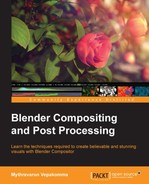This chapter provides a basic understanding on the role of compositing in a CG workflow and Blender's importance as a compositor. The following is a list of topics covered in this chapter:
- Compositing significance in the CG pipeline
- Significance of Blender as a compositor
- Blender-supported formats
- Blender color modes and depths
- Blender color spaces
- Understanding the render layers and render passes concepts
CG compositing is an assembly of multiple images that are merged and modified to make a final image. Compositing happens after 3D rendering, as seen in a typical CG pipeline flow, which is the most expensive phase of CG filmmaking. A well planned lighting and compositing pipeline can optimize render resources and also provide unlimited image manipulation functionalities to achieve the desired look for the film. Though compositing is at the end of the pipeline, with its wide range of toolsets, it can help to avoid the work of going back to previous departments in the CG pipeline.
The following diagram depicts a CG pipeline flow and also shows where the composite process fits in:

The strength of compositing lies in modifying the rendered CG footage into a believable output. The following screenshot portrays a Composited Output image done from rendered passes. Many effects such as glare, color corrections, and defocus make the output seem more believable than the rendered beauty pass, which is shown as the first image in Render Passes.

Compositing also provides tools to grade an image to achieve extreme or fantasy style outputs. The following screenshot illustrates different types of grades that can be performed:

Blender is the only open source product with a range of features comparable to other industry standard commercial or proprietary software. It provides a unique advantage of combining 3D and 2D stages of CG filmmaking into one complete package. This gives tremendous control when planning and executing a CG pipeline. Automating and organizing data flow from 3D rendering to compositing can be achieved more easily in Blender compared to other solutions, since compositing software is separate from the 3D rendering software.
